Let’s play a game!
Imagine you have a huge e-commerce store, online catalog, or website portfolio. Things are going very well; every day, hundreds (or even thousands) of users visit your website, spend some time, and then leave without any conversion action. What should you do or change in order to return those visitors and track their online behavior in the future?
The general action plan included a huge list of steps, including all of the marketing strategy aspects.
But right now you still might become close friends with Miss Analytics of your website.
The common problem encountered by one of the latest clients of LaSoft IT company – Protective Acquisition.
The Protective Acquisition is a portal with the Physical Security Products catalog created for vendors and buyers. Protective Acquisition is a multifunctional platform that includes:
- A central hub for all stakeholders (owners, architects, engineers, contractors, consultants, and vendors) who participate in the security building and infrastructure construction industries. A place where all involved can save time identifying the products that meet their specific project requirements, or, if a vendor. In this single place, their potential customers can search for and find their products based on specific project needs.
- This will save time (and therefore money) for Vendors as it will cut downtime on long and often fruitless searches.
- This will save time (and therefore money) for vendors as queries from Vendors will come as ‘pre-vetted’. That is, they will not be uninformed when they ask very basic questions about products. The vendors will have already been able to select products based on their specific criteria; they will only be calling about products that meet their needs.

What did we do in order to provide extensive analytical data on user behavior, including visitors’ detailed actions, such as clicks and link clicks on all of the elements of the website, including clicks on the website’s vendors?
The whole plan consists of three steps, as well as the names of the platforms that we used:
- Google Tag Manager that delivers simple, reliable, easily integrated tag management solutions.
- Google Analytics, which tracks and reports website traffic, is currently a platform inside the Google Marketing Platform brand.
- Hotjar visualizes what users want, care about, and do on your site by visually representing their clicks, taps, and scrolling behavior—the strongest indicators of visitor motivation and desire.
In the first step, we created an account on Google Tag Manager, published a GTM container, and implemented the GTM code on the website. On that step, you obviously will need some strong developers to help, but only with the implementation of GTM code on the <head> of your page, that’s all!

After the following steps, we can create four tags in the GTM container, which will become the website’s analytics base.

Tag #1: GA – Click.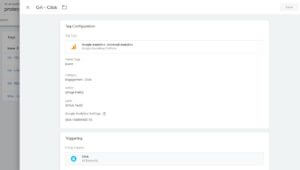
That tag is able to track all of the user’s clicks on the website elements.
He was created by using the default GTM trigger – Click, which enables manually, and two GTM variables – Page Path and Click Text:
Tag #2: GA – LinkClick.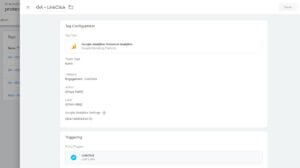
That tag tracks the user’s click on all of the website’s active URLs. It’s really useful when you have a lot of PDF documents and other downloadable links or all of the different types of vendors (as in our case) on the eCommerce store.
He’s using the default GTM trigger, Link Click, which enables it manually, and two GTM variables, Page Path and Click URL.
Tag #3: GA – MainTracking.

That tag is the basis of the GTM container and can track a user’s presence on the website via the GA account, including default indicators such as page views and averages, time on page, bounce rate, number of sessions, type of channel, custom events and conversions, ad campaigns, site speed, etc.
He’s using the default GTM trigger – All pages, that enables manual and GA ID as a custom variable:
Tag #4: Misc – Hotjar.
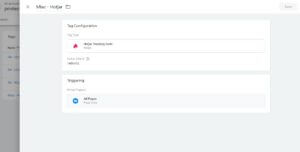
The last tag in the GTM container tracks the user’s behavior on the website using the heatmap developed by the Hotjar platform.
He’s using the default GTM trigger – All pages, that enables manually, and Hotjar ID, as a custom variable:
The following tags were created in order to track users’ behavior on the website as unique events.
All of them are displayed in the brand-new GA account of the Protective Acquisition website.
In the behavior section, under Events — Top events, we can track specific user actions, including clicks and link clicks on a custom page of the website.
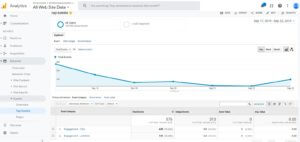
By pressing the Save report button in the GA account, we’re saving a lot of time and effort. Next time, we can just click on the customization section, and in the saved reports, we’ll see all of the necessary information up to the vendor’s segmentation.
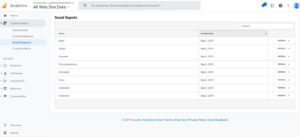
We just need to choose the correct time in the date section of the GA account and easily access to the specific user’s action by a website page or vendor’s name:
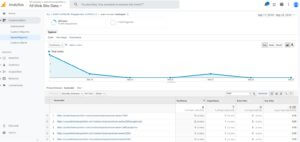
In the Hotjar account of the Protective Acquisition website, we see the heatmap of the users’ clicks on the website’s elements. That’s an unreplaceable resource of really useful information not just for the analytics department but also for the design team. With active heatmaps, product designers are able to analyze the user’s journey from the first click up to the exit page. With that being said, on future projects and on the improvements version of that one, UI-UX designers are able to improve the page’s design with a more understandable and trustworthy design for further customer goal conversions.
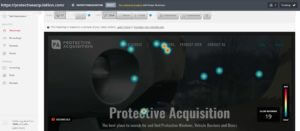
Under the recordings section, we are able to track users’ behavior and inspect the whole session from the first website visits up to the bounce rate pages. Hotjar collects user sessions in the form of short but informative videos that display the customer’s journey. Those recordings are the most beneficial way of searching and improving website pages and fixing them on the live version of the project.
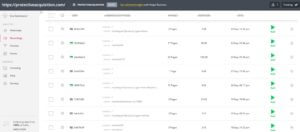
With that being said, Google Analytics, Google Tag Manager, and Hotjar are extremely important resources in the complicated marketing strategy of the eCommerce store or SPA website, as an irreplaceable source of useful data about the user’s behavior of the project and customer’s journey in general.
Please share the top resources and tags that you are using in the comments below to track user activity on your website.


